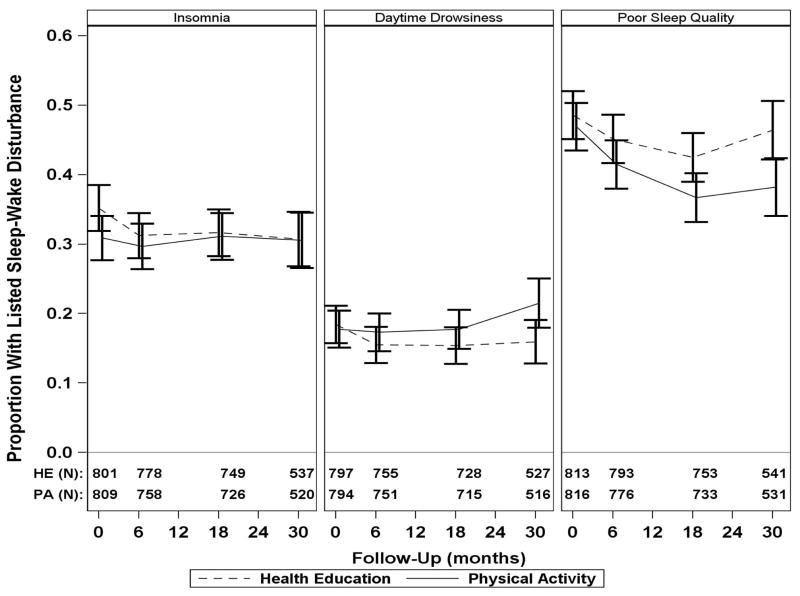Figure 1.
Prevalence of sleep-wake disturbancesa in the physical activity and health education intervention groups across 30 months of follow-upb,c
aCategorical variables, including insomnia (Insomnia Severity Index [ISI] ≥8), daytime drowsiness (Epworth Sleepiness Scale [ESS] ≥10), and poor sleep quality (Pittsburgh Sleep Quality Index [PSQI] >5), assessed at baseline and 6, 18, and 30 months. Of those who completed baseline sleep-wake questionnaires (Table 1), the percentage of participants with missing sleep-wake outcomes at each visit were: 6 months—ISI 5.8%, ESS 7.8%, PSQI 3.9%; 18 months—ISI 9.7%, ESS 11.3%, PSQI 9.1%; and 30 months—ISI 15.4%, ESS 16.6%, PSQI 14.3%. At each visit, for all sleep-wake outcomes, the absolute difference in percent missing between groups was always less than 3% (range of difference between intervention groups was 1.7% to 2.9%).
bOf the 818 participants who were randomized to physical activity, 118 discontinued the intervention after a median of 15.8 months. The physical activity group attended 63% of scheduled sessions after excluding medical leave (median [interquartile range] of 71% [50%–83%]) over a median of 28.5 months.
cOf the 817 participants who were randomized to health education, 160 discontinued the intervention after a median of 32.5 months. The health education group attended 73% of scheduled sessions (median [interquartile range] of 82% [63%–90%]) over a median of 32.5 months.

